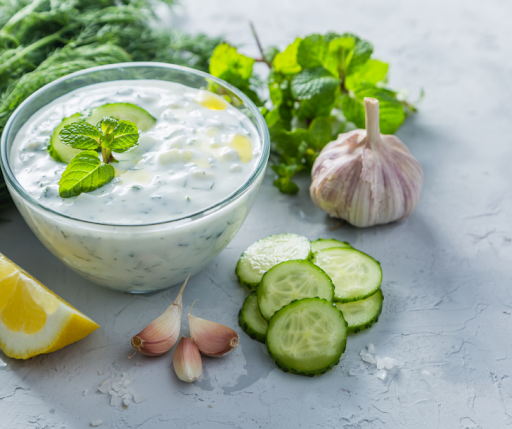Improve your bone health through movement and diet
The foods we eat and the way we are physically active can have an enormous influence on our bone health!
Calcium, vitamin D and physical activity all have important roles to play in building strong, healthy bones. Find out how our bone health can be shaped by the exercise and diet in our lives.
Bone Health
Our bones are made up of cells, tissue, and calcium. They work with our muscles to allow our bodies to move. Our bones store 99 percent of all the calcium found in our body. If we aren’t consuming enough calcium through our diet, the calcium stores in our bones will start to break down to support other parts of our body. If our bones lose too much calcium, they can become brittle, which may lead to osteoporosis. Osteoporosis is a condition where bones lose their density and strength.
How can exercise and diet help prevent brittle bones?
The Role of Exercise
Exercise helps to increase our bone mass, especially during our younger years. Just like muscles, bones need consistent exercise to help keep them strong. Weight bearing exercises or resistance training are the best types of movement to build strong bones. Jogging, hiking, walking, netball, tennis or lifting weights are all great forms of weight bearing exercise that support our bone health.
The Role of Diet
Calcium has an important role to play when it comes to supporting our bone health. The best source of calcium is dairy foods, such as cow’s milk, cheese, and yoghurt. Smaller amounts of calcium are found in green leafy vegetables (like broccoli or spinach), fish with bones, nuts and seeds, tofu, and calcium fortified foods, such as plant-based milk or breakfast cereals.
Women aged 19-50 require 1000mg of calcium every day. This can be met with one cup of cow’s milk, one cup of dairy based yoghurt, 30g of almonds and 2 slices of cheese over the course of a day. Try pairing our tzatziki dip with some veggie sticks for your next calcium rich snack! Salty foods can reduce how well our body absorbs calcium, so try to limit your intake of high-sodium foods, like processed meats, chips, and sauces.
Vitamin D also helps our body absorb calcium, so enjoying 30 minutes of outdoor exercise on a sunny day can help support our bones in more ways than one.

Tzatziki Dip
Method
- Gently squeeze excess moisture from cucumber in paper towels.
- Combine yoghurt, garlic and mint in a small bowl.
- Stir cucumber into yoghurt mixture.
- Serve with your choice of veggie sticks or crackers. Enjoy!
Ingredients
- 2 Lebanese cucumbers, peeled and finely chopped
- 2 cups low-fat natural yoghurt
- 2 cloves garlic, crushed
- 2 tbsp fresh mint (or 1 tablespoon dried mint), chopped.
References:
- The Better Health Channel. Bones [Internet]. Department of Health, State Government of Victoria, Australia © Copyright State of Victoria 2020. Updated 2012 Oct 31 [cited 2021 May 11]. Available from: https://www.betterhealth.vic.gov.au/health/conditionsandtreatments/bones
- Healthy Bones Australia. Calcium and Bone Health [Internet]. © Healthy Bones Australia 2021 [cited 2021 May 11]. Available from: https://healthybonesaustralia.org.au/your-bone-health/calcium/
- National Institute of Arthritis and Musculoskeletal and Skin Diseases. Exercise for your Bone Health [Internet]. Updated 2018 Oct [cited 2021 May 11]. Available from: https://www.bones.nih.gov/health-info/bone/bone-health/exercise/exercise-your-bone-health
- The Better Health Channel. Calcium [Internet]. Department of Health, State Government of Victoria, Australia © Copyright State of Victoria 2020. Updated 2019 Nov 17 [cited 2021 May 11]. Available from: https://www.betterhealth.vic.gov.au/health/healthyliving/calcium
- Nutrient Reference Values for Australia and New Zealand. Calcium [Internet]. Ministry of Health. Updated 2014 Sep 4 [cited 2021 May 11]. Available from: https://www.nrv.gov.au/nutrients/calcium
Last updated: May 27, 2024 at: 2:09 pm
